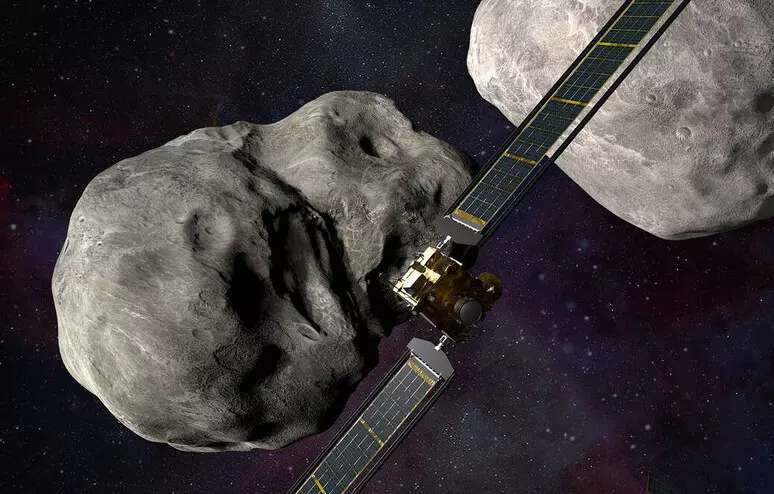A study led by the University of Maryland and published in The Planetary Science Journal has confirmed that Nasa’s DART (Double Asteroid Redirection Test) mission, which struck the asteroid Dimorphos in September 2022, successfully changing its orbit. However, the impact also generated a large amount of debris and rocks, propelled into space at up to three times the speed of the probe, reaching 52 meters per second.
The DART mission was designed as an experimental test of planetary defense: its purpose was to see if it was possible to deflect the trajectory of an asteroid by controlled impact, a technique that could be used in the future to protect Earth from potential threats from space. The target, Dimorphos, is a small asteroid orbiting a larger one, Didymos. This binary system was chosen precisely because it posed no danger to our planet and was ideal for accurately measuring the effect of the impact.
The researchers analyzed images collected by LiciaCube, the small Italian probe that documented the seconds after the impact. The data show that the 104 rocky boulders, tracked as they moved away from Dimorphos, generated unexpected forces, changing the asteroid’s orientation, which now requires close monitoring.
This result complicates the planning of future missions to deflect asteroids. “We were able to deflect an asteroid by moving it out of its orbit,” explains Tony Farnham, who heads the research group. “Our analysis shows that while the direct impact of the DART probe caused this change, the ejected boulders provided almost as powerful an additional thrust. This element,“ Farnham points out, ”changes the rules of physics to consider when planning missions of this type.
In the coming years, ESA’s European Hera mission will reach the Didymos system to study in detail the consequences of the impact and provide additional data crucial to the development of effective planetary defense strategies.










